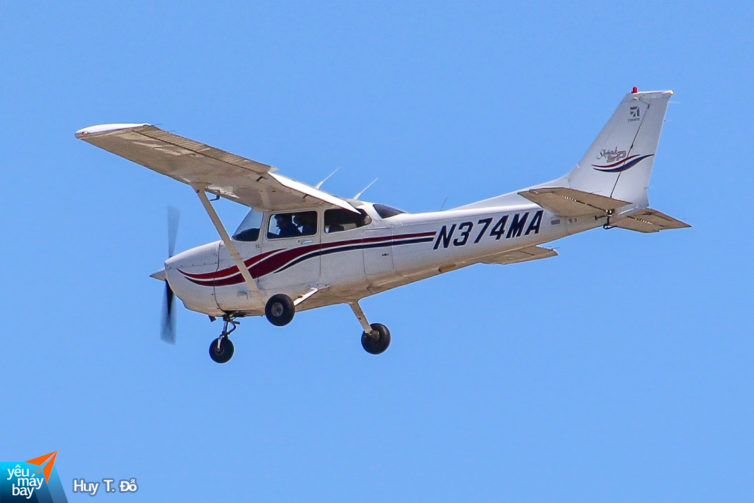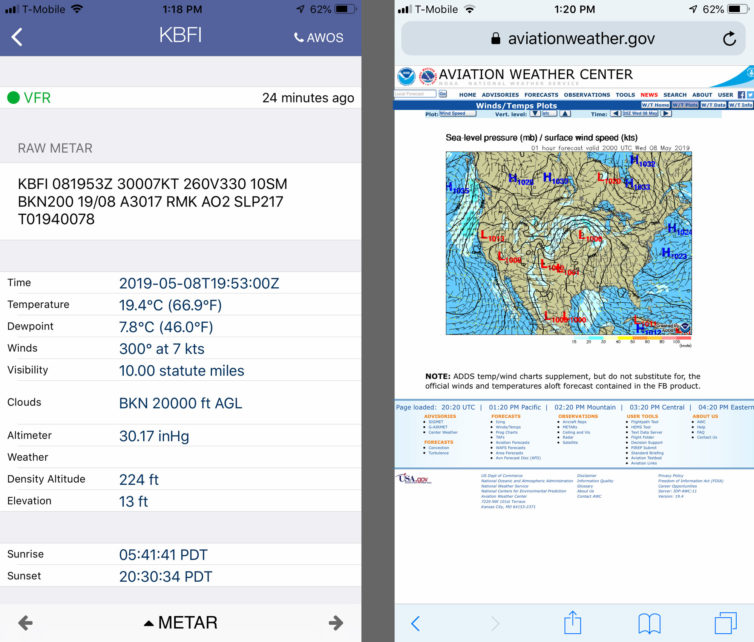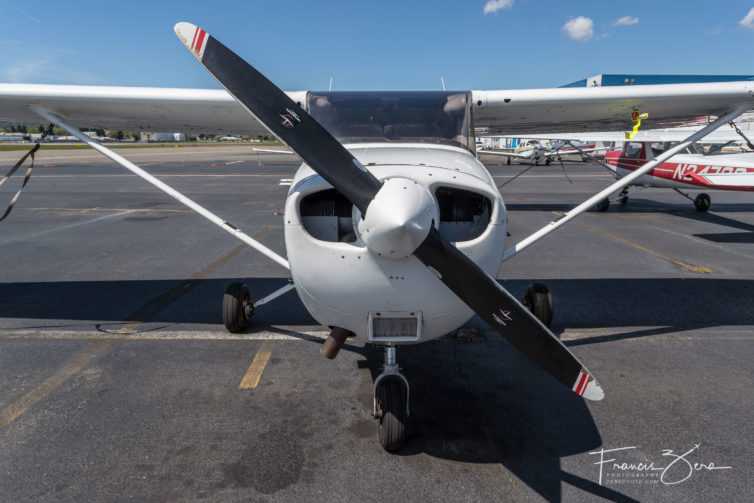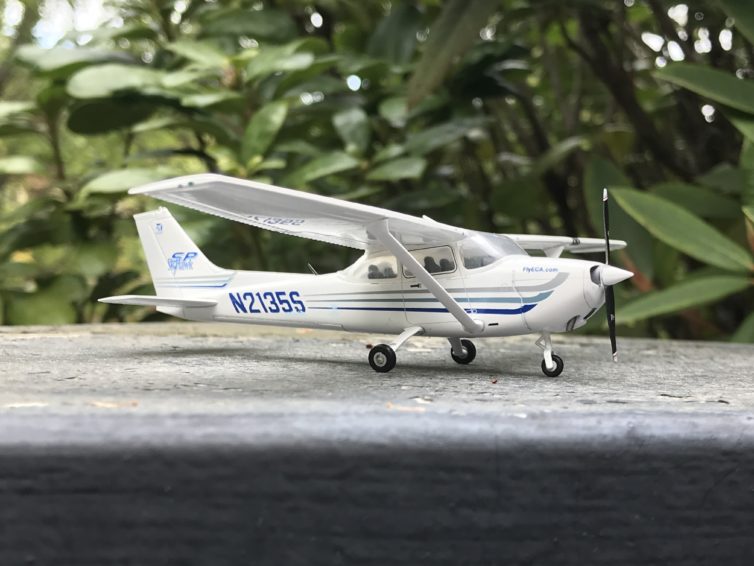
That’s us, coming in to land at BFI following my first training flight with Galvin Flying – Photo: Huy Do
This is a continuation of my multi-part series on learning to fly. You can read the introduction here.
As of now, I’ve completed the stage one and two ground-school exams. These exams are administered by the ground-school instructor at Galvin Flying and serve as checkpoints; they don’t count toward the FAA exam.
I’ve passed them both, which is encouraging (a passing grade is 70% – I did quite a bit better than that).
We’ve already covered basic aerodynamics, powerplants, flight instruments, airspace, airports, communications, and flight safety. We just wrapped up the comprehensive weather and FAA regulation sections; now it’s on to flight planning, which is where the math starts. We’ll learn to compute things like fuel consumption rates, time/speed/distance, endurance, airspeed, density altitude, and wind correction angles.

Believe it or not, this weather stuff is starting to make sense
Ground school wraps up on May 25th with a comprehensive knowledge test, which is basically a full-on practice version of the proper FAA exam.
Theoretically, if we’ve successfully completed the course, we’ll then be prepared to plunk down the roughly $165 to take the FAA written test; a grade of at least 70% is required to pass.
I’ve also started flight training. I didn’t mention before, but basically my butt is a bit too heavy for the Cessna 152, which is the aircraft I’d originally planned to train in, primarily for the $60/hour cost savings over the larger C172. Putting two 200 lb. adult males (my CFI isn’t a small guy, either) in a C152 means no cross-country flights, as the aircraft’s maximum payload limit leaves room for no more than 1/2 tank of fuel. I won’t lie, though, I do like the larger plane.

